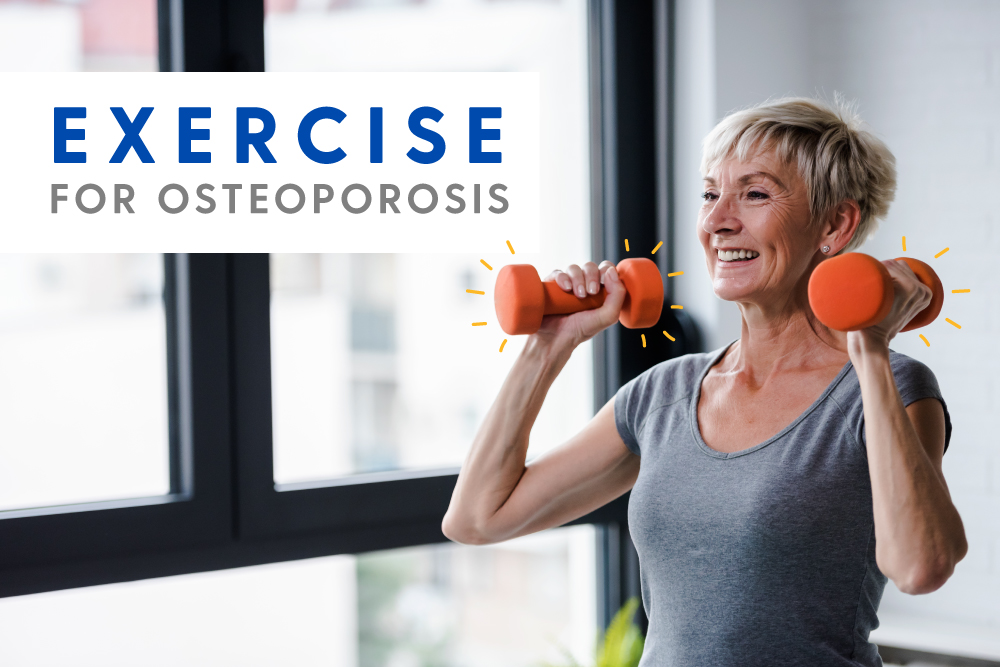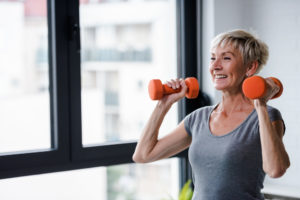
Osteoporosis; is exercise the simple step to better bone health?
 Osteoporosis is a chronic disease where the density and quality of our bones slowly decreases, resulting is decreased bone strength. As the disease progresses and the bones become weaker, there is a greater risk of fracture. Surprisingly, many people do not even know they have osteoporosis until they experience a fracture which is why osteoporosis is often considered a silent disease.
Osteoporosis is a chronic disease where the density and quality of our bones slowly decreases, resulting is decreased bone strength. As the disease progresses and the bones become weaker, there is a greater risk of fracture. Surprisingly, many people do not even know they have osteoporosis until they experience a fracture which is why osteoporosis is often considered a silent disease.
In Australia, 1.2 million people have been diagnosed with osteoporosis.1,3 Unfortunately, 1 in 3 women and 1 in 5 men over the age of 50 years will experience a low bone density fracture.1,3
There are huge personal and healthcare costs associated with osteoporotic fractures.
For example, in Australia in 2013, there were 400 osteoporotic fractures every day, with an annual direct health care cost of $2.75 billion. It is estimated that by 2022, there be will 500 osteoporotic fractures per day with an associated cost of $3.84 billion.1,3 These numbers are alarming but it is important to remember the significant personal costs too. One of the most common type of osteoporotic fractures is a hip fracture. Hip fractures are associated with pain, hospitalisation, surgery, loss of independence, ongoing injury and even premature death. The impact osteoporosis could have on you, your family and friends is significant.
This silent but costly disease needs your attention.
Fortunately, there is good evidence that osteoporosis can be managed extremely effectively through exercise, and medication where needed. Exercise has positive benefits for those with osteoporosis.5,7,8
1) Exercise helps prevent and stabilise bone loss and, for some individuals, can actually increase bone density4,6,7
2) By improving balance and muscle strength, exercise decreases the risk of falls. If you don’t fall, your chance of fracture is extremely low4,6,7
The type of exercise needed to benefit bones is quite specific and is different to that which is best for muscles and tendons. Additionally, it is really important that the exercise targets the specific area affected by osteoporosis. To be effective, the exercise needs to increase our bone’s capacity for load. To do this three essential components must be included:5,7,8
- heavy weights training
- impact exercises
- balance exercises
Multiple studies have found that bone loading programs are safe if performed under the guidance of an exercise physiologist or physiotherapist.8 In fact, guidance under a health professional is essential as exercise prescription must be individualised to be effective. Factors such as frequency, intensity, time and type of exercise need to be specifically assessed and individually targeted to achieve optimal outcomes for bone health. Also, common pathologies such as osteoarthritis and pelvic floor dysfunction need to be considered when prescribing exercise programs.
Osteoporosis is considered one of the major epidemics of the 21st century. However, exercise can help! Be proactive, see an exercise physiologist or physiotherapist for a bone loading program to take the first steps to better bone health.
By Alice Hyslop – Allsports Indooroopilly
References
- Beck, B. R. et. al. (2016). Exercise and Sports Science Australia (ESSA) Position Statement on Exercise Prescription for the Prevention and Management of Osteoporosis. Journal of Science and Medicine in Sport. 1403: 1-8
- Fatme et. al. (2019) An insight into the paradigms of Osteoporosis: From genetics to biomechanics. Bone Reports. 11: 100216
- Harding, A. & Beck, B. (2017). Exercise, Osteoporosis, and Bone Geometry. Sports. 5: 29
- Harding, A. T. et. al. (2017). The LIFTMOR-M trial: Protocol for a Semirandomisd Controlled Trial of Supervised Targeted Exercise to Reduce Risk of Soteoporotic Fracture in Older Men with Low Bone Mass. British Medical Journal. 014951: 1-13
- Osteoporosis Australia Advisory and Medical Committee. (2017). Osteoporosis Australia. Available at: www.osteoporosis.org.au
- Santos et. al. (2017). Exercise and Bone Health Across the Life Span. Biogenrontology. 18: 931-946
- Watson, S. L. et. al. (2018). High-Intensity and Resistance Training Improves Bone Mineral Density and Physical Function in Postmenopausal Women with Osteopenia and Osteoporosis: The LIFTMOR Randomized Controlled Trial. J Bone Miner Resource. 33 (2): 211-220
- Watson, S. L. et. al. (2015). Heavy Resistance Training is Safe and Improves Bone, Function, and Stature in Postmenopausal Women with Low to Very Low Bone Mass: Novel early Findings from the LIFTMOR Trial. Osteoporosis International. 26: 2889-2894
